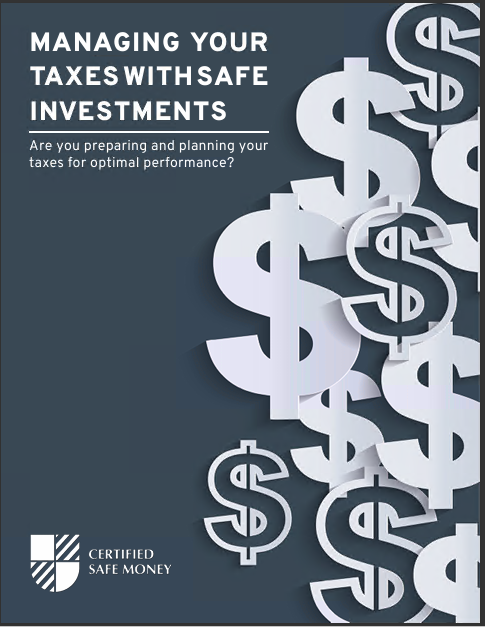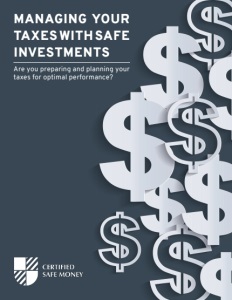Key Takeaways
- Indexed Universal Life (IUL) insurance offers flexible premiums and potential for growth tied to market indexes, but comes with risks that require careful management.
- Whole life insurance provides guaranteed death benefits and cash value accumulation, making it a safer but less flexible option compared to IUL.
IUL vs. Whole Life Insurance: Which One Should You Choose and Why?
When it comes to life insurance, the choices can be overwhelming. Among the most debated options are Indexed Universal Life (IUL) insurance and Whole Life insurance. Both serve the fundamental purpose of providing a death benefit, but they do so in different ways, offering unique advantages and disadvantages. In 2024, with markets constantly evolving and financial planning becoming increasingly complex, the choice between IUL and Whole Life insurance requires careful consideration. This article will help you navigate the key differences, so you can make an informed decision based on your financial goals and risk tolerance.
The Flexibility Factor: Why IUL Might Appeal to You
One of the primary reasons people are drawn to Indexed Universal Life (IUL) insurance is its flexibility. IUL policies offer adjustable premiums, allowing you to increase or decrease your payments within certain limits. This can be particularly advantageous during times of financial uncertainty, giving you the option to lower your premium payments without losing your coverage.
Additionally, the cash value component of an IUL policy is tied to a stock market index, such as the S&P 500. This means that your policy has the potential for growth beyond what a traditional Whole Life policy can offer. However, it’s important to understand that this growth is not guaranteed. The performance of your cash value is subject to market conditions, and while most IUL policies offer a guaranteed minimum interest rate, the actual returns can vary significantly.
Market Participation with a Safety Net
IUL insurance provides a way to participate in market gains while also protecting your principal through caps and floors. The “cap” is the maximum interest rate your cash value can earn in a given period, while the “floor” is the minimum guaranteed rate. For example, if your policy has a cap of 10% and the market index increases by 15%, your cash value would grow by 10%. Conversely, if the market falls, the floor ensures that you won’t lose money, though you may not earn any interest that year.
This structure makes IUL attractive to those who want to capitalize on market growth but are wary of taking on full market risk. However, the cost of insurance charges and fees can eat into your returns, particularly if the market underperforms. It’s also worth noting that over-optimistic projections by insurance agents can sometimes lead to unrealistic expectations.
Whole Life Insurance: Stability and Simplicity
In contrast, Whole Life insurance is known for its stability. It provides a guaranteed death benefit and a guaranteed rate of return on the cash value component of the policy. This makes it a conservative choice, particularly appealing to those who prioritize long-term security over potential high returns.
Guaranteed Returns with a Steady Growth
The cash value of a Whole Life policy grows at a fixed rate, which is determined by the insurance company. This rate is usually lower than what you might potentially earn with an IUL, but it’s predictable and secure. For individuals who prefer certainty, this can be a significant advantage. You know exactly how much your policy will be worth at any given time, and you don’t have to worry about market volatility affecting your coverage.
Another benefit of Whole Life insurance is the dividends that some policies offer. These dividends are a portion of the insurance company’s profits and can be used to reduce premiums, purchase additional coverage, or simply increase the cash value of your policy. While dividends are not guaranteed, they are a common feature of Whole Life policies, adding another layer of value.
Cost Comparison: Understanding the Long-Term Implications
When comparing IUL and Whole Life insurance, cost is a critical factor. IUL policies tend to have lower initial premiums because of their flexible payment structure. However, the total cost over time can be higher due to fees and charges associated with the management of the cash value component. These costs can increase, particularly if the policyholder chooses to adjust their premiums or if the market performs poorly.
Whole Life insurance, on the other hand, usually comes with higher premiums but more predictable costs over the lifetime of the policy. The premiums are fixed, meaning you’ll pay the same amount throughout the life of the policy, making it easier to budget for in the long term. While this can be a significant financial commitment, the stability and guaranteed growth can be worth it for those who value predictability.
Long-Term Considerations
One of the most significant factors to consider is how long you plan to keep the policy. IUL policies can become expensive to maintain as you age, especially if the market underperforms. The cost of insurance can rise significantly, and if you’re not careful, you could end up paying more than you initially anticipated.
Whole Life insurance, with its fixed premiums, doesn’t carry the same risk of escalating costs. However, the trade-off is that you might miss out on higher returns during periods of strong market performance. For this reason, Whole Life is often seen as a “set it and forget it” type of policy, ideal for those who want lifelong coverage without the need to actively manage their policy.
Cash Value Access: Borrowing Against Your Policy
Both IUL and Whole Life insurance policies allow you to borrow against the cash value of your policy, providing a source of funds in times of need. However, the way this borrowing works and its implications differ between the two types of insurance.
IUL Policy Loans
With an IUL policy, you can take out a loan against the cash value, and the amount borrowed does not reduce the death benefit as long as the loan is repaid. The loan interest rate is typically lower than other forms of borrowing, making it an attractive option. However, if you don’t repay the loan, the outstanding amount plus interest is deducted from the death benefit, potentially leaving your beneficiaries with less than you intended.
Whole Life Policy Loans
Whole Life insurance also allows for policy loans, with similarly low-interest rates. The major difference is that the cash value in a Whole Life policy grows at a guaranteed rate, making it easier to predict how much you can borrow at any given time. However, like with IUL, unpaid loans will reduce the death benefit.
In both cases, borrowing against your policy can be a useful financial tool, but it’s essential to understand the terms and consequences of these loans. If managed poorly, borrowing against your life insurance policy can lead to unintended financial strain or reduced benefits.
Suitability: Matching Insurance with Your Financial Goals
Choosing between IUL and Whole Life insurance ultimately comes down to your financial goals and risk tolerance. IUL is better suited for individuals who are comfortable with some level of risk and want the potential for higher returns. It’s also a good option for those who need flexibility in premium payments and are interested in a policy that can adapt to their changing financial situation.
Risk Tolerance and Investment Goals
If you’re considering IUL, it’s crucial to assess your risk tolerance. While the potential for growth is appealing, you need to be prepared for the possibility that your policy’s cash value might not grow as expected, especially in volatile markets. If you’re someone who closely monitors financial markets and is willing to take on more risk for the possibility of higher returns, IUL could be a fitting choice.
Long-Term Security and Legacy Planning
On the other hand, if you prioritize long-term security and are looking for a straightforward, predictable life insurance policy, Whole Life insurance is likely the better option. It’s particularly suitable for individuals who want to ensure that their policy will provide a guaranteed death benefit, regardless of market conditions. Whole Life insurance is also a strong choice for legacy planning, as it offers a way to pass on wealth to your heirs with minimal risk.
Final Thoughts: Making the Right Choice for You
In 2024, the decision between Indexed Universal Life (IUL) and Whole Life insurance requires careful consideration of your financial goals, risk tolerance, and long-term plans. IUL offers flexibility and the potential for higher returns, making it an attractive option for those willing to navigate market risks. However, the unpredictability of returns and the potential for increasing costs over time can be drawbacks.
Whole Life insurance, with its guaranteed benefits and stable growth, offers peace of mind and a more straightforward path to financial security. While it may lack the excitement of potential market gains, its predictability and reliability make it a strong candidate for those seeking a conservative and dependable insurance policy.
Choosing the right policy is a personal decision that should align with your overall financial strategy. Whether you’re drawn to the flexibility and growth potential of IUL or the stability and guarantees of Whole Life, understanding the key differences will help you make an informed choice that best suits your needs.













